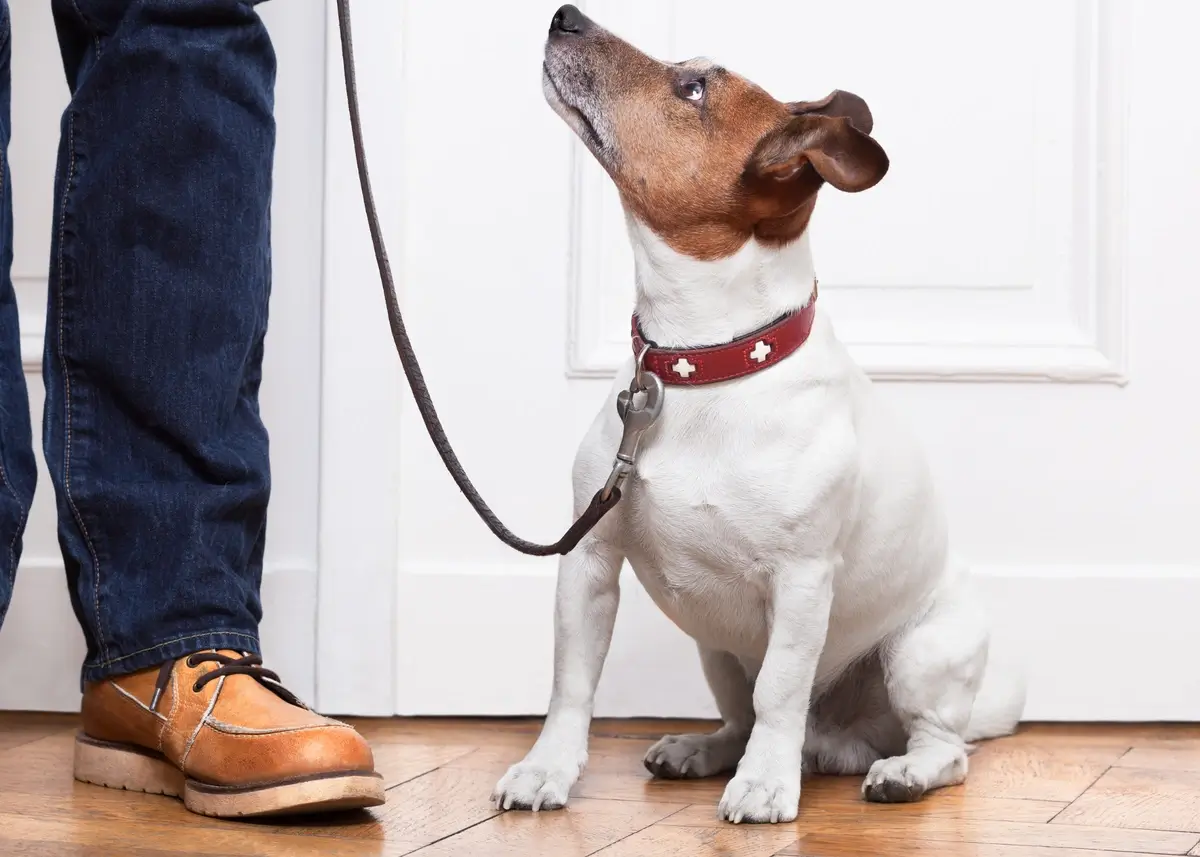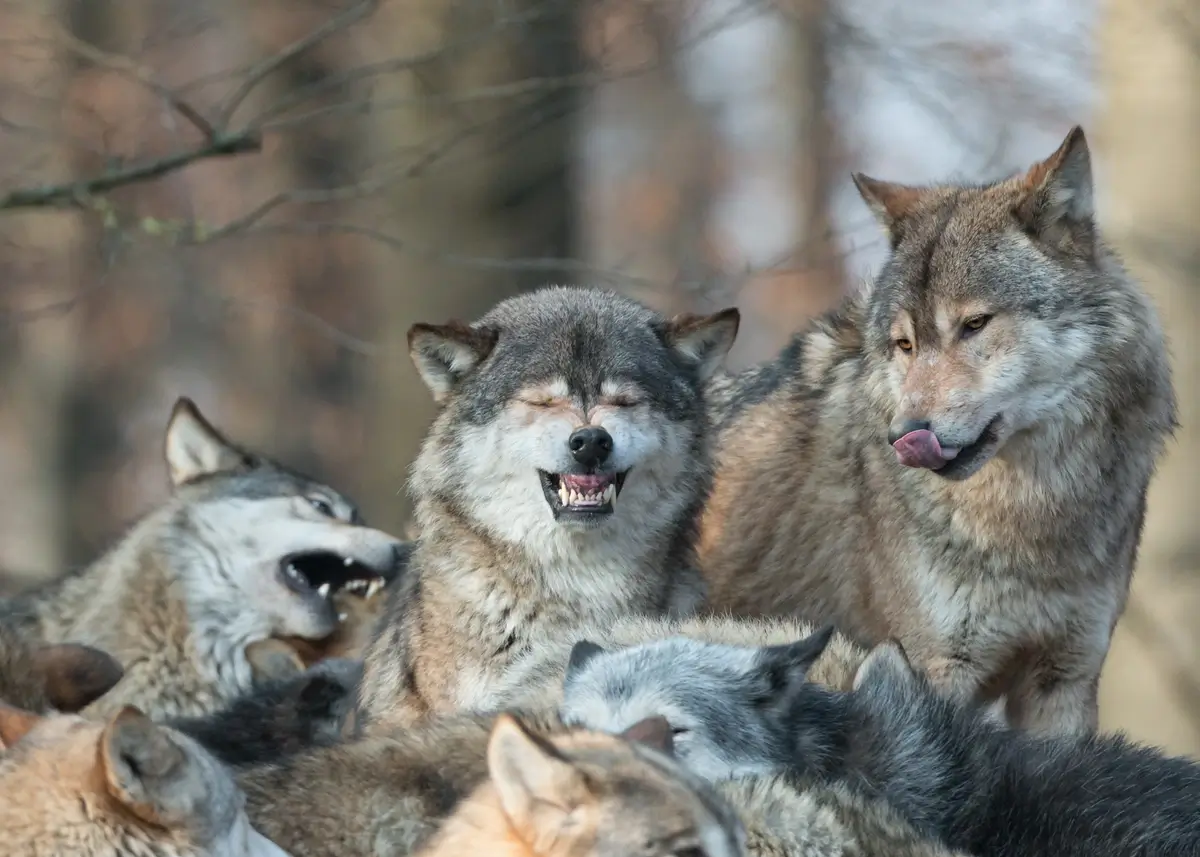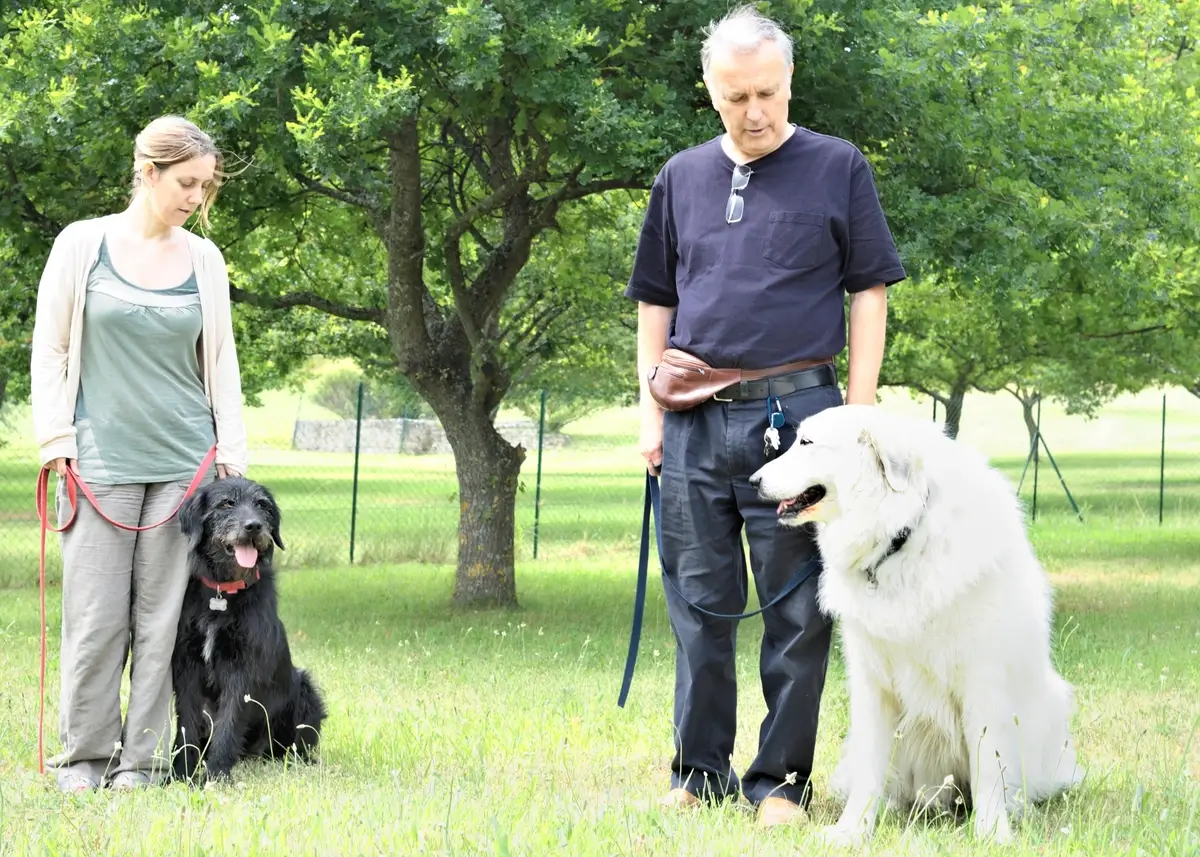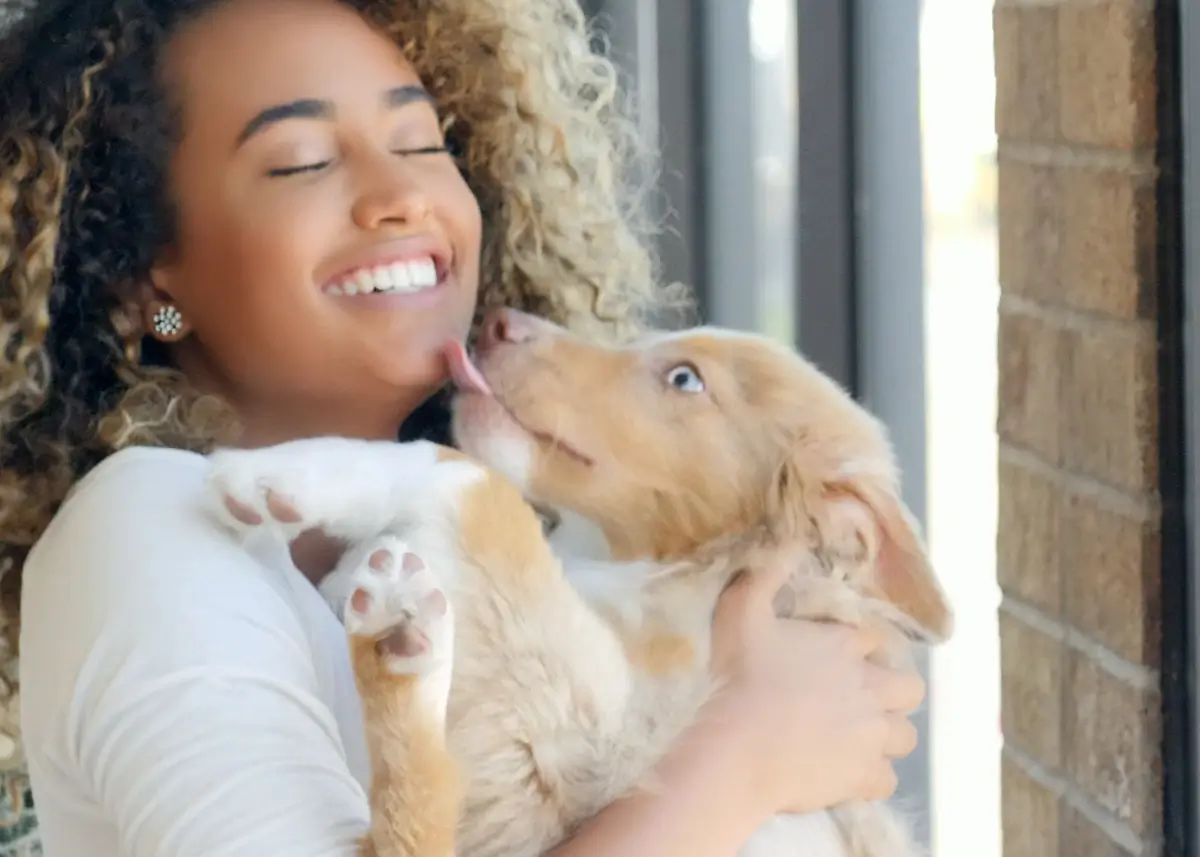Before you consider puppies for sale, you may wonder how the dynamic in your household may change by adding another living being. You know that you’ll be teaching them how to become cherished members of your family through socialization and basic puppy training commands. You have all the good intentions of showing your puppy leadership, but you might not know to go about demonstrating it to your new puppy – or the science behind how a puppy is innately wired to behave.
We’ve all known some people who ignore their puppies’ bad behavior. Those puppies then grow to be unpleasant dogs who rule the house with their behavior. Either their owners are overwhelmed and give up, or they are completely oblivious and feed into the problem by spoiling and indulging their dog without any consequences while everyone suffers.
These dogs that are allowed to dictate the environment of the house can serve as a great example of what NOT to do!
So how do we teach our puppy we are the ones in a position of leadership without using harsh methods? It’s necessary to educate ourselves on the canine pack mentality before a new puppy joins our home so we can use training methods that result in raising a happy & healthy puppy.
A Scientific Look at Canine Pack Mentality
We can apply the term “pack mentality” to both wild animals and humans, as we both have an ingrained desire to be a liked member of a group. However, there are a few differences between how pack mentality manifests in humans, a dog’s wolf ancestors, and modern-day dogs.
What exactly does “pack mentality” mean?
With all living beings, “pack mentality” is when animals make decisions based upon the actions of others driven by the social and status-seeking desire to assimilate. With regard to pack mentality, animals (humans, wolves, or dogs) do not want to stand out too much or be left behind – and for important reasons.
How can pack mentality show up in humans?
Applied to modern times, humans who stand out from society’s unspoken rules run the risk of being ridiculed, bullied, ostracized, or even killed in some circumstances for going against the grain. But because humans are more complex than wild animals, it is not always a negative thing to stand out; in fact, much-needed societal change in perceptions, policies, and standards of living have come about due to people having the courage to deviate from society’s norms.
What does pack mentality look like in wild animals?
In relation to wild animals, lagging behind or drawing attention to oneself is a surefire way to be eaten by a predator, and there’s some truth to the adage “there’s safety in numbers.” Those who go along with the group have a better chance of survival, and those animals that decide to forge their own path and run away single themselves out to a predator.
Is the “alpha dog” concept real or a myth?
We’ve all heard of the “alpha” wolf being in charge of a pack of wolves who submit to the alpha leader, and we know that all modern dogs evolved from wolves.
The Alpha theory follows that in order to survive, wolfpack members looked to a leader, called the Alpha, to organize the pack and make decisions for them to maintain the survival of the pack. The Alpha would stay in the back (rather than leading in the front) to watch over the pack. Eating habits were established in order – rather than the Alpha getting the best parts of the prey, the younger and weaker ones would eat first to ensure survival.
Several studies have shown the wolf alpha myth does not quite translate to domesticated dogs that are raised as human companions. However, dogs can and do organize themselves into canine social hierarchies and do look to a leader but not quite as intense as in the exact same nature as wolves. Think of it as a leftover remnant of instinctual behavior.
Recent research has shown that while yes, dogs can submit to a true leader, modern-day dogs are much more social in nature, do not rely on one Alpha operating the same way as wild animals, and can be more independent without a threat to their survival. Your puppy does not need a whole pack of dogs to gain meaning or stature and instead finds comfort in being submissive to you in a healthy deference.
Understanding the Dynamic Between Puppies and Humans
New research on canine learning patterns indicates we actually understand far less about dogs than they understand us! Instead of your puppy growing into an “alpha dog,” they instead show “a pattern of behaviors with their human family members that are driven by a variety of motivations, including genetics, socialization, available resources, fear, conflicts, learning, behavioral pathology and disease” (Horwitz & Landsberg).
Puppies want to acknowledge leaders in their homes. Even though they know you are not a dog, they do look to you to fulfill their basic needs and form a strong bond with their caretakers.
However, sometimes you may not understand your dog’s body language and behavior and how that impacts dog psychology of how they view you as being in charge.
If you do not step up to assert dominance as the leader in a positive manner, you may experience a series of undesirable behaviors in your dog that you need to correct before they become dominant over you.
How to Start Out As A Strong Household Leader For Your Puppy
Even though puppies desire to please you as their owner, you still have to teach them how to do so. Your puppy has just left the only home he or she has ever known. They’ve been learning lessons on just about everything, from how to nurse, eat kibble, where to use the restroom, and recognize personal puppy boundaries during playtime. Their lessons continue when they move to the new environment of your home. They have to learn all about the world around them, including where they fit within your household.
Here are some ways to start off on the right paw to avoid undesirable behavior caused by misunderstanding dog psychology.
Research your breed before you buy a puppy for sale
Different dog breeds were bred for specific purposes. Some are working dogs at heart and need a job to do, while others were bred specifically to be human companions. Regardless of the origin of a puppy’s purpose to serve humans, some dog breeds will be much more stubborn and independent than others. You’ll need to research the right dog breed for you and plan accordingly when considering the best training techniques for your breed.
Spend quality time with your puppy
Begin right away by establishing a strong bond with your puppy. You can easily achieve this by spending quality time letting your puppy know you love them by playing together, going on walks, and interacting with them through mental stimulation opportunities for puppies. The more time you spend with your puppy, the more they will want to please you and make training easier.
Train your puppy early
Teaching your puppy commands will help you establish that you’re in charge and will result in curbing bad behavior later. Teaching your puppy to work for what it wants (a positive reward) will give them a sense of accomplishment. Beyond the basics, showing your dog how to wait for its food, stay in a “place” position until you release them, how to walk on a leash, or learn to wait while you walk through the door first are all positive ways to demonstrate your leadership through training techniques.
Be patient with training your puppy
Just like Rome wasn’t built in a day, your puppy will not be trained overnight. It is definitely a process and will require a lot of patience from you to teach your puppy to do what you’d like for him or her to do with regular results.
The Wrong Ways to Assert Dominance Over Your Puppy
Never directly challenge your puppy
Instead, redirect bad behavior by giving your puppy a chance to make a good choice, and lavishly reward them through positive reinforcement.
Never use physical aggression
Never, ever physically force your dog into dominance, such as holding them down or hitting them to make them obedient. First of all, harming an animal is abuse, and second of all, your intentions will backfire. Your dog could defend itself and become aggressive to you, or you could be teaching your dog to fear you and cower when you come nearby, therefore ruining your bond.
Don’t confuse your puppy with mixed signals
If you are not consistent with your puppy training methods, your puppy will learn he or she cannot rely on you to be assertive. This inconsistency will teach your puppy it’s okay to beg, ignore your commands, and do whatever it wants – definitely not what you want to teach your puppy in its first few crucial months at home with you!
Ways You Can Tell Your Puppy Respects You
- They never leave your side
- They look to you for guidance on behavior
- Your puppy does not beg or try to steal your food
- Your puppy listens to the commands you give
- They do not challenge your authority
- They do not cower in fear or avoid you
- You can tell they enjoy your time with you
Lead a Pawrade Puppy
Hopefully, these tips on understanding canine behavior will help assimilate your new puppy into your family dynamics and give you a chance to think about your leadership skills.
When searching for a new puppy, you’ll research the different dog breeds and choose the puppy that fits your family dynamics the best. Put your dreams into practice when you browse our puppies for sale to bring home a new member of your pack.




